In a world where clouds aren’t just for daydreaming, cloud control is the superhero every business needs. Imagine having the power to manage your data like a pro while sipping coffee in your pajamas. Sounds dreamy, right? With the rise of remote work and digital transformation, mastering cloud control isn’t just a nice-to-have; it’s essential for survival in today’s tech jungle.
Table of Contents
ToggleOverview of Cloud Control
Cloud control refers to managing and securing data and applications hosted in the cloud. Numerous organizations rely on cloud control to optimize performance and maintain compliance. Effective cloud control encompasses monitoring, management, and automation to enhance operational efficiency.
Understanding cloud environments requires knowledge of various deployment models. Public clouds, private clouds, and hybrid clouds each cater to different business needs. Businesses often choose their model based on factors like security, scalability, and cost.
Data governance is a crucial aspect of cloud control. Managing who has access to sensitive information ensures data integrity and compliance with regulations such as GDPR or HIPAA. Implementing role-based access control (RBAC) enhances security by limiting access to authorized users.
Performance monitoring tools provide real-time insights into cloud applications. These tools help identify bottlenecks and optimize resource allocation. By leveraging analytics, teams can make informed decisions to improve service delivery.
Automation in cloud control streamlines repetitive tasks. Automated workflows reduce human error and free up IT personnel for strategic initiatives. Solutions like Infrastructure as Code (IaC) exemplify how automation enhances cloud management.
Cost management tools assist in tracking cloud spending. Businesses can identify cost-saving opportunities through usage patterns. Regular audits of cloud resources support efficient budget allocation and prevent overspending.
Overall, mastering cloud control empowers organizations to harness their cloud investments effectively. Prioritizing security, performance, and cost-efficiency allows organizations to thrive in an increasingly digital landscape.
Benefits of Cloud Control

Cloud control offers significant advantages for organizations looking to optimize their operations. Key benefits include cost efficiency and enhanced security.
Cost Efficiency
Cost efficiency is a primary advantage of cloud control. Organizations can optimize resource allocation to minimize waste. Flexible pricing models allow businesses to pay only for what they use. This model helps avoid hefty upfront investments in physical infrastructure. Scalability permits adjusting resources according to demand, ensuring companies only spend on necessary services. Moreover, tracking tools provide insights into spending, highlighting potential areas for savings. Efficient management of resources directly influences budget allocation, empowering organizations to utilize capital effectively.
Enhanced Security
Enhanced security represents another crucial benefit of cloud control. Organizations can implement role-based access control to restrict sensitive data access. This strategy mitigates the risks associated with unauthorized access. Furthermore, robust encryption protocols protect data at rest and in transit. Compliance with regulations like GDPR and HIPAA becomes streamlined due to improved governance. Regular security audits identify vulnerabilities, further fortifying cloud environments. Practices such as automatic software updates maintain security integrity against emerging threats, ensuring data remains secure and trustworthy.
Challenges in Cloud Control
Cloud control presents several challenges that organizations must navigate to secure data and maintain compliance.
Data Privacy Concerns
Data privacy is a significant challenge in cloud control. Organizations must ensure sensitive information is protected against unauthorized access. Breaches can lead to dire consequences, including financial loss and reputational damage. Implementing robust encryption protocols minimizes risks, yet data stored in the cloud remains vulnerable to cybersecurity threats. Regular audits help identify vulnerabilities, ensuring compliance with data protection standards such as GDPR and HIPAA.
Compliance Issues
Compliance issues pose another challenge in cloud control. Various regulations govern how organizations manage and store data. Non-compliance can result in severe penalties. Staying current with evolving legislation requires ongoing diligence and effective management practices. Organizations often struggle to maintain clear data governance policies, which is essential for adhering to regulations. Utilizing automated compliance tools aids in monitoring data management processes, ensuring alignment with legal requirements.
Key Features of Effective Cloud Control
Effective cloud control relies on several key features that enhance data management in cloud environments. These features support organizations in optimizing their cloud investments while addressing security and compliance needs.
Resource Management
Resource management stands as a cornerstone of cloud control. It ensures optimal allocation of cloud resources, enabling organizations to adjust according to demand. Effective cloud control involves tools that analyze usage patterns, helping businesses identify underutilized services. By reallocating resources based on real-time data, companies minimize waste and reduce operational costs. Furthermore, automation tools enhance resource management, allowing for seamless adjustments in scaling up or down as needed.
Monitoring and Optimization
Monitoring and optimization play a vital role in maintaining cloud performance. Organizations utilize performance monitoring tools to gain insights into application behavior in real-time. These tools help in identifying bottlenecks and potential issues before they escalate. With comprehensive analytics, businesses can fine-tune their applications for improved performance and user experience. Optimization also involves leveraging data analytics to inform resource adjustments, ensuring that services remain robust and responsive to changing needs.
Cloud control is essential for organizations aiming to thrive in today’s digital landscape. By effectively managing data and applications in the cloud, businesses can enhance security, optimize performance, and ensure compliance with regulations. The strategic use of cloud deployment models allows for tailored solutions that meet specific needs.
As organizations navigate the complexities of data governance and cybersecurity, implementing robust tools and practices becomes crucial. Emphasizing automation and real-time monitoring can significantly reduce risks and improve resource allocation. Ultimately, mastering cloud control not only bolsters operational efficiency but also positions organizations for sustained success in an ever-evolving technological environment.



